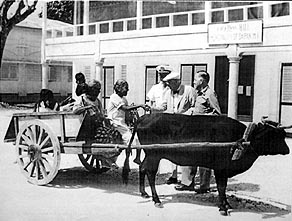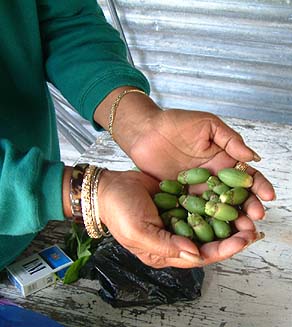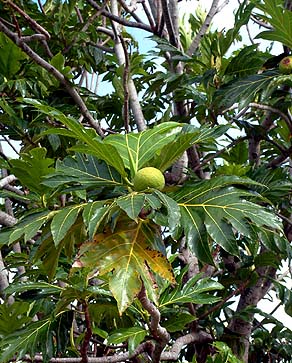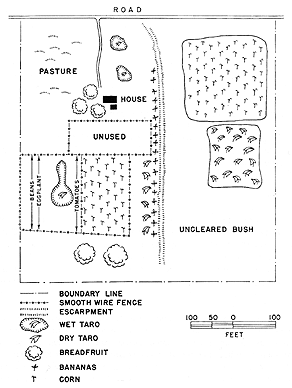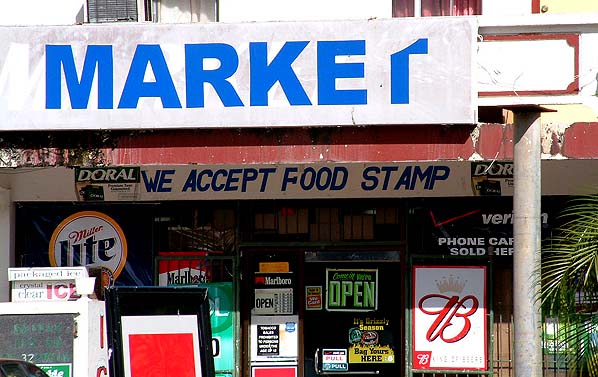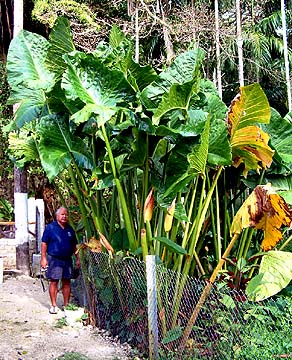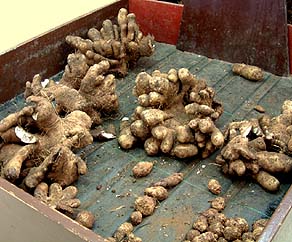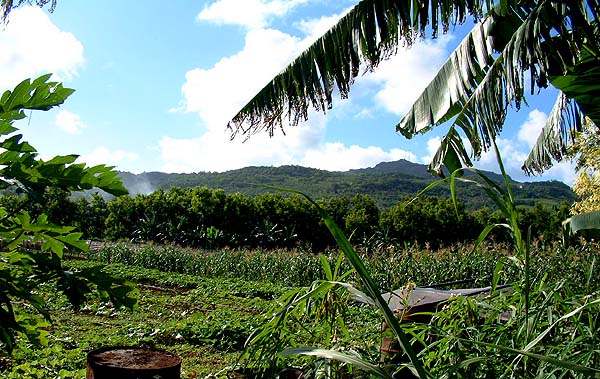 |
 |
 |
|||||
|
|
|
|
|
|
|
|
|
|
|
|||||||
|
|
|
|
|
|
“In the old days agricultural activities included planting of corn, taro, cassava, pineapple, and bananas,” Ben explains. “Agriculture occurred mostly uphill, and while some was for trade or barter, subsistence was the main aspect of the traditional agriculture. There are some plants that were commercialized, such as the pineapple."
|
||
|
|
||
|
“I remember when my grandfather and my grandmother, from my mother’s side, would harvest pineapple by the bull cart. load. Sometimes we bring in two or three bull carts, and we had only one market—just the military. They would buy all the pineapple we could produce, and so we cultivated more pineapples than most other people because that was a market for us. “It was traditional that we raise cattle and primarily male cattle so that we can use them to plow the soil, and we can use them to pull the bull cart. And we used a lot of bull carts in those days. Preferably we used the younger males for pulling these. They’re more energetic, and they’re a little bit stronger, and they tend to grow old as we use the bull cart.”
|
“When my husband was alive, we used to plant betel nut trees," Estella recalls, "because betel nut is a money tree for us. We also used to plant taro and yam. And we planted the mango, a different kind of mango: the Caribao mango, the Panama mango and our regular mango. We also planted some pineapple. "And during my mother’s time, she used to go up to the farm every day after school and my father would be at the farm. They were planting taro, sweet potato, yam, tapioca and even tobacco. They planted tobacco so they wouldn’t have to go to the store often and get tobacco. So they planted their own tobacco and then when they knew that it was ready to harvest, they would cut it and then hang it inside the farmhouse to dry it."
|
|
|
|
|
Breadfruit in Tanapag.
|
"I didn’t see a whole lot of agricultural activity with regard to breadfruit," Ben ponders. "We thought breadfruit was naturally occurring, and so not very many people planted breadfruit. As I grow older, I see that was a mistake, because there are diseases that were introduced, maybe from other Micronesian islands, and they nearly succeeded in exterminating all our breadfruit trees. "Now they are coming back. I guess they’ve become tolerant to whatever disease that was introduced, and now we have quite a few breadfruit trees on the island. And our people started to propagate them, including myself. I have one back here, and because I concentrate on fishing just before this dry season approaches, I need to put back that breadfruit tree in the soil."
|
"The old folks planted banana, taro, anything that could be eaten," Pete remembers, "but my grandfather was planting banana. He planted a lot of banana, because he used that for alcohol. They’d make it ripe, and they’d put it in a big container. They’d harvest all the bananas before they were ripe, then they’d ripen them off the tree. Soon as they were ripe and very soft, they’d peel them and put them inside the big container and smash them up. "Then what they’d do is drain the banana, remove the liquid, and then start boiling it. As they cooked that liquid, there would be a pipe going from the pot where the banana liquid is cooking straight up to a container; so anything that came out, that was liquor--like 100-proof liquor. They called it aguayente. 'Agi' for short."
|
|
|
|
|
|
"The influence of food stamps has really made an impact on people who farmed or tended their land," Ben states. "Now you don’t have to be a farmer. You can become lazy, go and apply for food stamps, and survive. In the olden days, there were no food stamps. People had to go out there and plant or go out there and fish. Today, there are quite a few people on food stamp programs here in this village."
|
||
|
|
||
“This program really disturbs me," Dan remarks, "because the way our culture is, if you’re jobless, then you depend on farming, you depend on the water: go fish, go farm. Those are our main sources for consumption. Go to the farm and plant. If you want fish, you go to the ocean and fish. Jobless people, that’s what they did before, a long time ago. My father was never employed before, but we never starved for food. He worked both land and water. That’s where he got our food. "Now, you stay on the food stamps for all your life if you don’t have a job. So what’s the food stamp going to do for you? Is it going to make you a more valuable person in your life? Or is it going to worsen your life? I think that program should be removed from this island.”
|
|
|
"I think food stamps help a lot of people," Ben suggests, "but I think it’s in the wrong way. They should have a program where, if you’re not working this month or next month, you make sure you go and apply for a job. If you don’t, maybe you’ll get your food-stamp privileges extended. "But some people just can’t find a job because the husband passed away, and only the mother is taking care of the kids, and the mother cannot go to work. There’s some young children that must be taken care of. Those are kind of permanent-type food stamp recipients. I saw the detrimental aspects early, but it’s too late now to rectify it. People just don’t like to farm anymore."
|
|
|
|
|
“The government provides land for farming,” Ben points out. “The Kagman Farm Plots are provided by the government. Further back south east of this area, past Capitol Hill, they have farm plots in there. You lease them from the government, and you get to plant according to the season. And their produce is commercial. They plant cucumbers, Chinese cabbage, string beans, all kinds of vegetables."
|
||
|
|
||
"The dry season is good for watermelons. So watermelon is being planted back there. The only problem is, if one person plants watermelon, everybody plants watermelon. You just flatten the market immediately. Then farmers complain that they don’t get enough money for their watermelon. But because they all compete, maybe that’s good for the consumer. The consumer gets the better end of the markets. "Today, raising cattle is sort of a status symbol. You need a lot of real estate for a large number of cattle. To effectively raise those cattle, to use their protein machine (changing grass to protein) takes a lot of land. For three head of cattle you need something like five acres of land. That’s a large piece of land that we don’t have."
|
|
|
"Here in Tanapag, we have one cattle operation. One fence, one ranch, maybe four or five cattle, because it’s a small one. Other cattle are tendered. They just bring them to a grassy place and tie them. Every day they have to move them. "And sometimes the owners get all kinds of heartburn and heartache. Sometimes people who want to eat meat steal those animals. It’s happening everywhere. Not very often, but every once in awhile, someone will be asking around, 'Did you see my cow? I lost my cow.' That means somebody stole it."
|
|
|
|
"Now agriculture is a thing of the past," Ben states. "Here in the village there’s no commercial agriculture. It’s dead. It’s gone. You find people planting bananas. There’re all subsistence." Like many other traditions, agriculture and agrarian values remain despite the transformations planting has undergone. Other important traditions that still bear on the present are examined in the next chapter, Footprints.
|
||
|
|
||
|
|
|
|
|
|

|
| Tanapag Home | Map Library | Site Map | Pacific Worlds Home |
|
|
|
|

|
|
|
|||
| Copyright 2003 Pacific Worlds & Associates • Usage Policy • Webmaster |
|||

